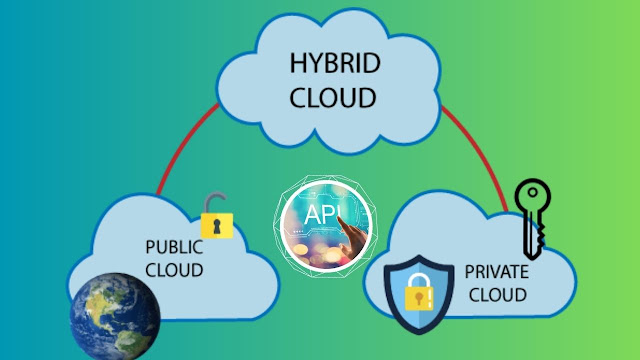The APIs have evolved into the core component of efficient digital communication in the frenetic world of modern technology. Imagine them as the connections that make it possible for various apps to function in harmony with one another. Many businesses are experimenting to determine the optimal proportion of in-house computer systems to outsourced cloud computing in order to meet their information technology needs. Imagine that they are trying to establish the optimal balance between the resources they have on-premises and those they get via the cloud. These companies are devising methods that are not only superior but also more efficient with the assistance of Application Programming Interfaces (APIs), which stand for application programming interfaces. This ends up making customers really happy because their experiences get even better. APIs do this by letting different applications share information, services, and cool things they can do. It's like these apps are all teaming up to make things awesome for customers. However, as APIs continue to grow in significance, it is becoming more obvious that we need to place a greater emphasis on maintaining their level of security, particularly when we are interacting with many cloud service providers at the same time.
Navigating the Terrain of Hybrid, Multi-Cloud Environments
The way we're building digital systems is changing because of the rise of hybrid and multi-cloud setups. In the realm of digital technology, we are entering something like to a new age in terms of the way things are assembled. In order to maximize both speed and scalability, many companies are turning to cloud computing solutions that may be either public, private, or a combination of the two. While these configurations offer unprecedented flexibility, they simultaneously introduce intricate security concerns due to the vast attack surface they present. APIs, acting as the connective tissue between disparate cloud resources, inevitably attract the attention of cyber adversaries seeking exploitable vulnerabilities.
Taming the Complexity of API and Tool Sprawl
As different cloud services, apps, and tools come together swiftly, organizations are facing a new challenge known as "API and tool sprawl." This basically means that there's an explosion of APIs and tools all over the digital world, creating a complex web of interconnected systems. This can sometimes get pretty confusing. When things get really complicated, it becomes hard to keep track of what's happening. And when that happens, it gets even tougher to watch over and keep important things safe. So, the more tangled everything gets, the trickier it becomes to monitor everything effectively and make sure it's all well-protected.
Niche API Security Challenges and Pragmatic Solutions for the Financial Sector
The financial services sector, often considered the lifeblood of economies, finds itself at the nexus of unique API security challenges. Safeguarding sensitive customer information, ensuring secure financial transactions, and adhering to stringent regulatory frameworks are paramount. Here are some pivotal challenges and recommended best practices for this sector:
Challenges:
Data Privacy Pinnacle: With the financial industry's relentless commitment to data privacy, safeguarding customer information during API interactions becomes a paramount challenge. Adhering to regulations like the General Data Protection Regulation (GDPR) and the Health Insurance Portability and Accountability Act (HIPAA) is non-negotiable.
Navigating Regulatory Labyrinths: The financial domain is characterized by an intricate network of regulations and compliance standards. Ensuring that APIs align with these industry-specific mandates requires meticulous attention to detail and a comprehensive understanding of the regulatory landscape.
Third-Party Tightrope: Financial institutions frequently collaborate with third-party vendors to augment their offerings. Yet, this collaboration comes with a caveat—the potential security vulnerabilities introduced by third-party APIs. Balancing the innovation these collaborations offer with the associated risks is an ongoing challenge.
Best Practices:
Authentication and Authorization Elevation: Mitigating risks entails enforcing rigorous authentication mechanisms like OAuth or utilizing API keys to ensure that only authorized personnel access sensitive APIs.
The Encryption Shield: Deploy end-to-end encryption to shield data both in transit and at rest. Leveraging secure protocols like HTTPS fortifies data against prying eyes and potential breaches.
Gatekeepers of Security—API Gateways: Centralize API management and security controls through API gateways. These gateways act as sentinels, facilitating traffic analysis, filtering, and even throttling API requests.
The Ongoing Vigil—Regular Audits: Periodic security audits and vulnerability assessments are essential to identify and rectify potential weaknesses lurking within the API infrastructure.
Expert Insights: Navigating API Security Trends and Robust Solutions
Leading experts in the realm of cybersecurity underscore a multitude of emerging trends and potent solutions to amplify API security:
Trends:
The Ascendance of Zero Trust: The concept of Zero Trust architecture is gaining momentum. This approach treats every API request as potentially malicious, demanding meticulous identity verification and continuous monitoring for unprecedented security.
Harnessing AI and Machine Learning: By tapping into the power of artificial intelligence (AI) and machine learning (ML), companies can actually spot unusual patterns that might signal upcoming attacks. This really boosts their ability to catch potential threats early on.
Solutions:
Sentinel of Security—API Security Platforms: Investing in comprehensive API security platforms equips organizations with a robust defense mechanism. These platforms encompass traffic analysis, threat detection, and sophisticated bot mitigation.
The Convergence of DevSecOps: Intertwining security into the very fabric of the development and deployment pipeline fosters a proactive approach to identifying and rectifying security vulnerabilities early in the process.
Behavioral Analytics Vigil: The implementation of behavioral analytics equips organizations to scrutinize user and API behavior meticulously, expediting the identification of potential threats and unauthorized activities.
Let's summarize:
The Efforts need to be coordinated in order to enhance the basis of digital connection in order to accommodate the various complexities of API security in a digital landscape that is constituted of hybrid and multi-cloud settings. The adoption of demanding best practices, sensitivity to changing trends, and investment in robust security solutions are all important components in the construction of a resilient API architecture, which should be pursued by organizations, particularly those in the financial sector. Application programming interfaces, often known as APIs, are continuing to shape the contours of innovation and connectivity. As a result, maintaining the safety of APIs is an essential need in the modern digital world.






0 Comments